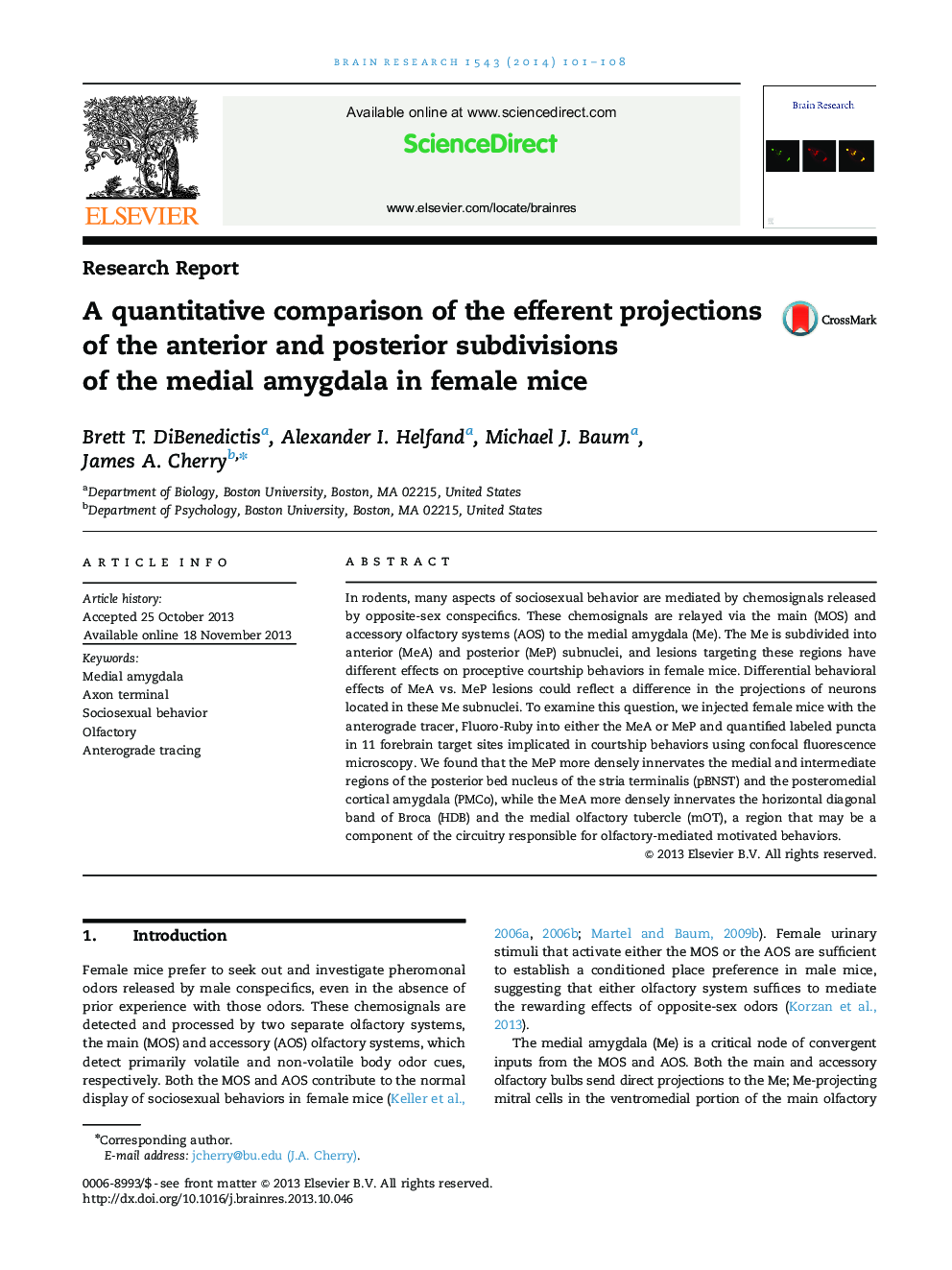| Article ID | Journal | Published Year | Pages | File Type |
|---|---|---|---|---|
| 6263436 | Brain Research | 2014 | 8 Pages |
â¢The anterior and posterior Me differentially innervate downstream targets.â¢The MeP, but not the MeA, densely innervates the BNST and PMCo.â¢The MeA, but not the MeP, densely innervates the HDB and mOT.â¢Circuits from the Me to the mOT may underlie innate approach behaviors.
In rodents, many aspects of sociosexual behavior are mediated by chemosignals released by opposite-sex conspecifics. These chemosignals are relayed via the main (MOS) and accessory olfactory systems (AOS) to the medial amygdala (Me). The Me is subdivided into anterior (MeA) and posterior (MeP) subnuclei, and lesions targeting these regions have different effects on proceptive courtship behaviors in female mice. Differential behavioral effects of MeA vs. MeP lesions could reflect a difference in the projections of neurons located in these Me subnuclei. To examine this question, we injected female mice with the anterograde tracer, Fluoro-Ruby into either the MeA or MeP and quantified labeled puncta in 11 forebrain target sites implicated in courtship behaviors using confocal fluorescence microscopy. We found that the MeP more densely innervates the medial and intermediate regions of the posterior bed nucleus of the stria terminalis (pBNST) and the posteromedial cortical amygdala (PMCo), while the MeA more densely innervates the horizontal diagonal band of Broca (HDB) and the medial olfactory tubercle (mOT), a region that may be a component of the circuitry responsible for olfactory-mediated motivated behaviors.
